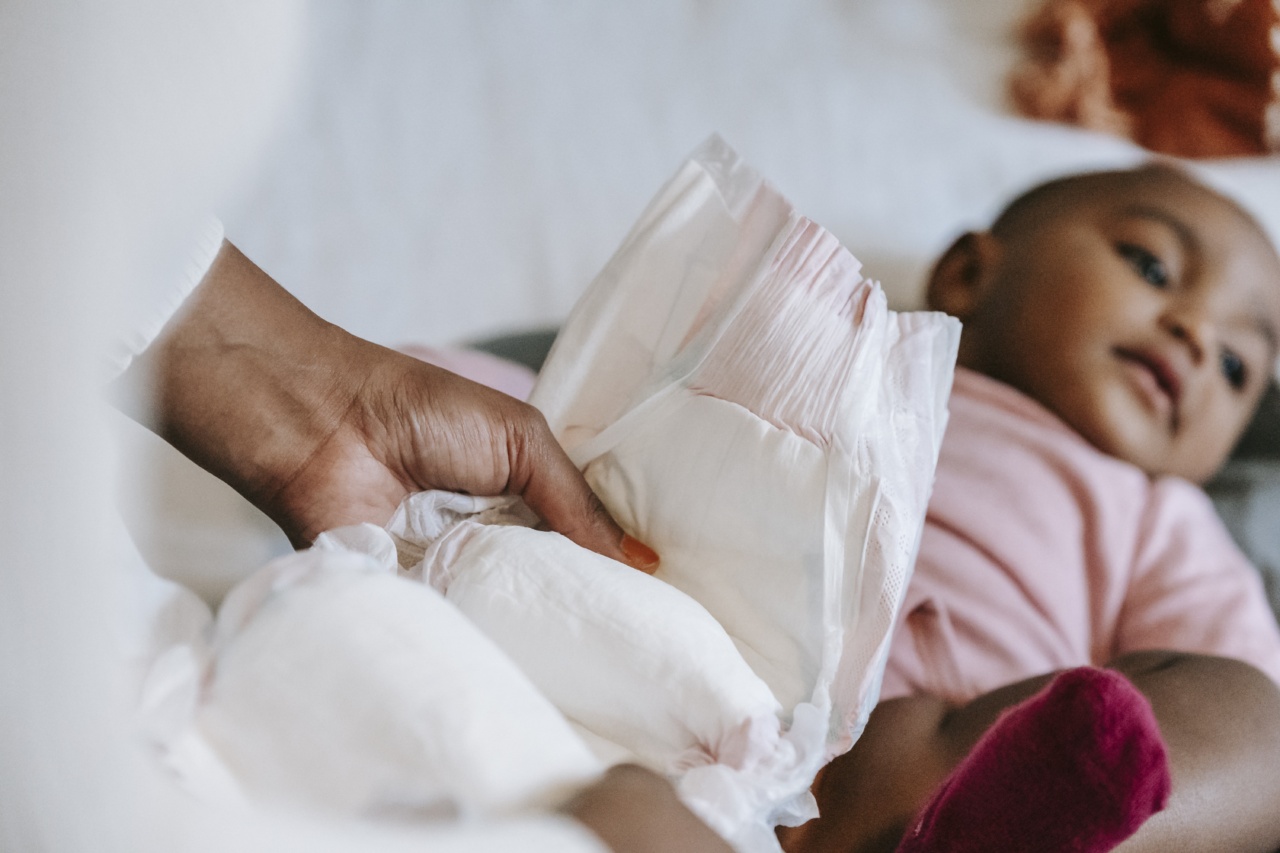Acute Otitis Media (AOM) is a common infection that affects the ear, particularly in babies and young children. It is characterized by inflammation and infection of the middle ear, which is the space located behind the eardrum.
This condition occurs when bacteria or viruses enter the ear and cause an infection.
Causes of Acute Otitis Media
There are several factors that can contribute to the development of acute otitis media in babies and kids:.
1. Upper respiratory infections: Common colds, flu, or other viral infections can lead to AOM.
These infections can cause swelling and blockage of the Eustachian tube, which connects the middle ear to the back of the throat, allowing bacteria or viruses to enter and cause infection.
2. Age: Young children, especially those between 6 months and 2 years old, are more prone to developing AOM because their Eustachian tubes are shorter and more horizontal, making it easier for bacteria to reach the middle ear.
3. Exposure to secondhand smoke: Being exposed to cigarette smoke increases the risk of developing AOM.
4. Bottle-feeding while lying down: Feeding a baby while they are lying down can increase the chances of developing AOM as it can disrupt the proper drainage of the Eustachian tubes.
5. Use of pacifiers: Frequent and prolonged use of pacifiers has been associated with an increased risk of AOM.
Symptoms of Acute Otitis Media
It is important to recognize the signs and symptoms of acute otitis media in babies and kids, as early detection and treatment can prevent complications. The following are some common symptoms:.
1. Ear pain: Babies and young children may not be able to express their pain verbally, but they may show signs of discomfort by pulling on their ears, crying excessively, or being irritable.
2. Fever: A high temperature (generally over 100.4°F or 38°C) is a common symptom of AOM.
3. Difficulty sleeping or restless sleep: Ear pain can disrupt a child’s sleep pattern, leading to restlessness or difficulty staying asleep.
4. Loss of appetite: The pain and discomfort associated with AOM can cause a decreased interest in eating.
5. Fluid drainage from the ear: In some cases, an infected eardrum may rupture, leading to the discharge of pus or fluid from the ear. This may provide temporary relief from pain but should still be addressed by a medical professional.
6. Decreased hearing: Fluid buildup in the middle ear can affect a child’s hearing, causing them to be less responsive to sounds or frequently asking for repetition.
7. Irritability and fussiness: A child with AOM may display increased irritability or fussiness due to the discomfort caused by the infection.
Diagnosing Acute Otitis Media
If you suspect your baby or child has acute otitis media, it is crucial to seek medical attention for an accurate diagnosis and appropriate treatment. A healthcare professional will typically perform the following:.
1. Physical examination: The doctor will examine the ears, nose, and throat to look for signs of infection and inflammation. They may use an otoscope to visualize the eardrum and assess its condition.
2. Assessment of symptoms: The healthcare provider will ask about the child’s symptoms, including any ear pain, fever, or fluid drainage.
3. Evaluation of medical history: The doctor may ask about the child’s medical history, including previous ear infections or other related conditions.
4. Tympanometry: This test measures the movement of the eardrum in response to changes in air pressure. It helps determine if there is fluid behind the eardrum, a common sign of AOM.
5. Audiometry: In some cases, a hearing test may be conducted to assess the child’s hearing ability.
Treatment of Acute Otitis Media
The treatment for acute otitis media in babies and kids may vary depending on the severity of the infection and the age of the child. The main goals of treatment are to relieve pain, eradicate the infection, and prevent complications.
The following treatment options are commonly recommended:.
1. Analgesic medication: Over-the-counter pain relievers such as acetaminophen or ibuprofen can help alleviate ear pain and reduce fever.
Always consult a healthcare professional to determine the appropriate dosage for your child’s age.
2. Antibiotics: If the infection is bacterial or deemed severe, the doctor may prescribe antibiotics to eliminate the bacteria causing the infection.
It is important to complete the full course of antibiotics as prescribed, even if symptoms improve before the medication is finished.
3. Ear drops: In some cases, antibiotic ear drops may be recommended to directly treat the infection within the ear. Follow the instructions provided by the healthcare professional on administering the ear drops.
4. Observation: In certain mild cases or for children over the age of 2, a “watch and wait” approach may be taken.
This involves monitoring the child’s symptoms and allowing the infection to resolve on its own without immediate intervention. It is essential to follow up with a healthcare professional to ensure proper healing.
5. Myringotomy: In severe or recurrent cases of AOM, a surgical procedure called myringotomy may be considered. This involves making a small incision in the eardrum to allow fluid drainage and relieve pressure.
A small tube, called a tympanostomy tube, may be inserted into the incision to aid in fluid drainage. This procedure is typically performed under general anesthesia.
Preventing Acute Otitis Media
While it may not always be possible to prevent AOM completely, there are steps you can take to reduce the risk of infection:.
1. Vaccinations: Ensure your child is up to date with recommended vaccinations, including those for influenza and pneumococcal bacteria, as they can help prevent certain infections that can lead to AOM.
2. Avoid exposure to secondhand smoke: Keep your child away from environments where they may be exposed to cigarette smoke, as it increases the risk of developing AOM.
3. Promote good hand hygiene: Encourage regular handwashing in both children and adults to reduce the spread of germs that can cause upper respiratory infections.
4. Breastfeeding: Breastfeeding can help boost a baby’s immune system, reducing the risk of upper respiratory infections and AOM.
If breastfeeding is not an option, consult with a healthcare professional about appropriate infant formulas.
5. Avoid bottle-feeding while lying down: Feed your baby in an upright position to prevent milk or formula from flowing into the middle ear.
6. Limit pacifier use: Minimize the use of pacifiers, especially once your child reaches 6 months of age. If your child relies on a pacifier for sleep or comfort, ensure it is kept clean and not shared with other children.
7. Practicing good respiratory hygiene: Teach your child to cover their mouth and nose when sneezing or coughing to prevent the spread of germs.
When to Seek Medical Attention
It is important to consult a healthcare professional if you suspect your baby or child has acute otitis media. Seek immediate medical attention if:.
1. Your baby is younger than 6 months old and has a fever of 100.4°F (38°C) or higher..
2. Your child is experiencing severe ear pain or shows signs of significant distress..
3. The symptoms worsen or do not improve within 48 to 72 hours..
4. There is fluid drainage from the ear, especially if it is accompanied by a strong odor or the child’s hearing is affected..
Conclusion
Acute otitis media is a common infection that affects babies and young children. Recognizing the signs and symptoms is crucial for early detection and prompt treatment, which can prevent complications and ensure a quicker recovery.
By understanding the causes, symptoms, diagnosis, and treatment options for AOM, parents can actively monitor their child’s health and take appropriate measures to prevent and address this common childhood infection.




























